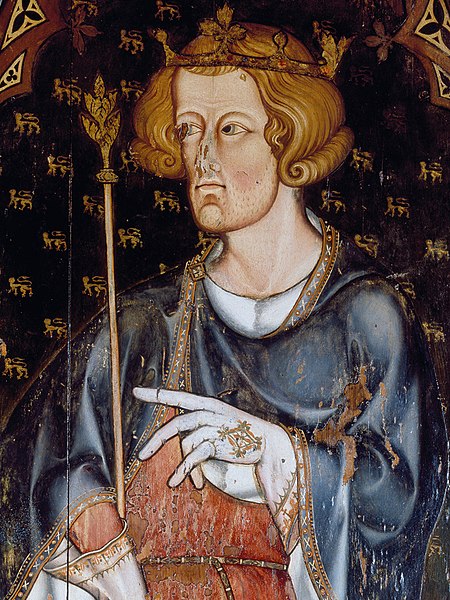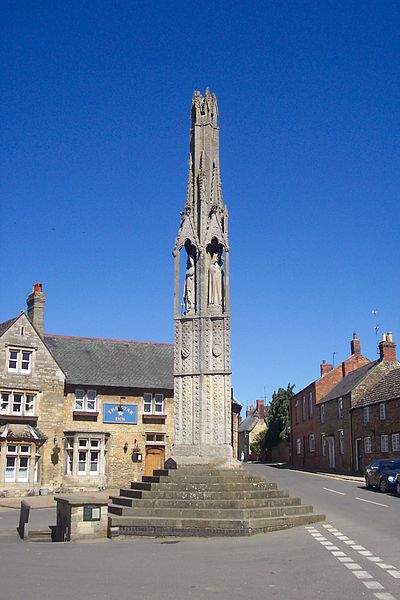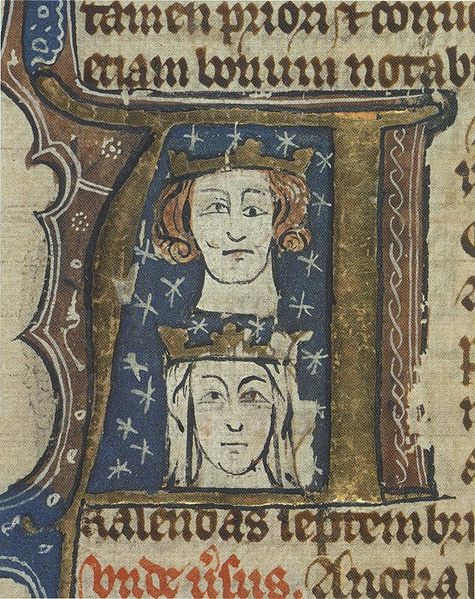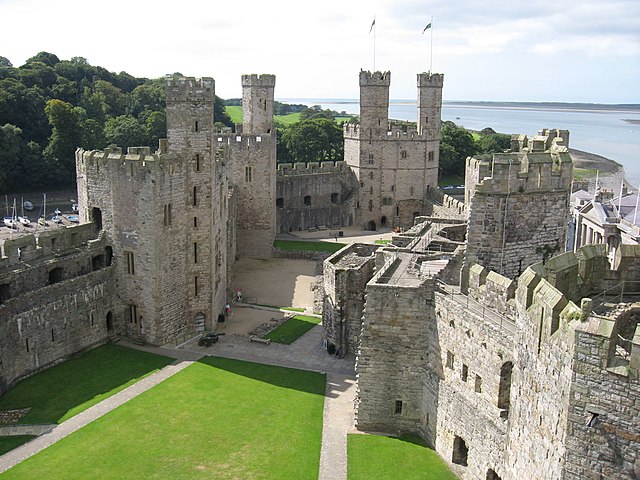The Eleanor crosses were a series of twelve tall and lavishly decorated stone monuments topped with crosses erected in a line down part of the east of England. King Edward I had them built between 1291 and about 1295 in memory of his beloved wife Eleanor of Castile. The King and Queen had been married for 36 years and she stayed by the King's side through his many travels. While on a royal progress, she died in the East Midlands in November 1290. The crosses, erected in her memory, marked the nightly resting-places along the route taken when her body was transported to Westminster Abbey near London.
Geddington, Northamptonshire, the best-preserved of the original crosses, and the only triangular one
Eleanor of Castile, Queen Consort of England 1272–1290
Illumination from the Très Riches Heures du Duc de Berry (c. 1412–1416) depicting a cross possibly representing one of the montjoies of Louis IX
The surviving fragment of the Lincoln cross
Edward I, also known as Edward Longshanks and the Hammer of the Scots, was King of England from 1272 to 1307. Concurrently, he was Lord of Ireland, and from 1254 to 1306 he ruled Gascony as Duke of Aquitaine in his capacity as a vassal of the French king. Before his accession to the throne, he was commonly referred to as the Lord Edward. The eldest son of Henry III, Edward was involved from an early age in the political intrigues of his father's reign. In 1259, he briefly sided with a baronial reform movement, supporting the Provisions of Oxford. After reconciliation with his father, he remained loyal throughout the subsequent armed conflict, known as the Second Barons' War. After the Battle of Lewes, Edward was held hostage by the rebellious barons, but escaped after a few months and defeated the baronial leader Simon de Montfort at the Battle of Evesham in 1265. Within two years, the rebellion was extinguished and, with England pacified, Edward left to join the Ninth Crusade to the Holy Land in 1270. He was on his way home in 1272 when he was informed of his father's death. Making a slow return, he reached England in 1274 and was crowned at Westminster Abbey.

Portrait in Westminster Abbey likely depicting Edward I, installed sometime during his reign
Early fourteenth-century manuscript initial showing Edward and his first wife Eleanor of Castile. The artist has perhaps tried to depict Edward's blepharoptosis (drooping eyelid), a trait he inherited from his father.
Medieval manuscript showing the Earl of Leicester's mutilated body at the field of Evesham
Caernarfon Castle, one of the castles erected in Wales during the reign of Edward I








